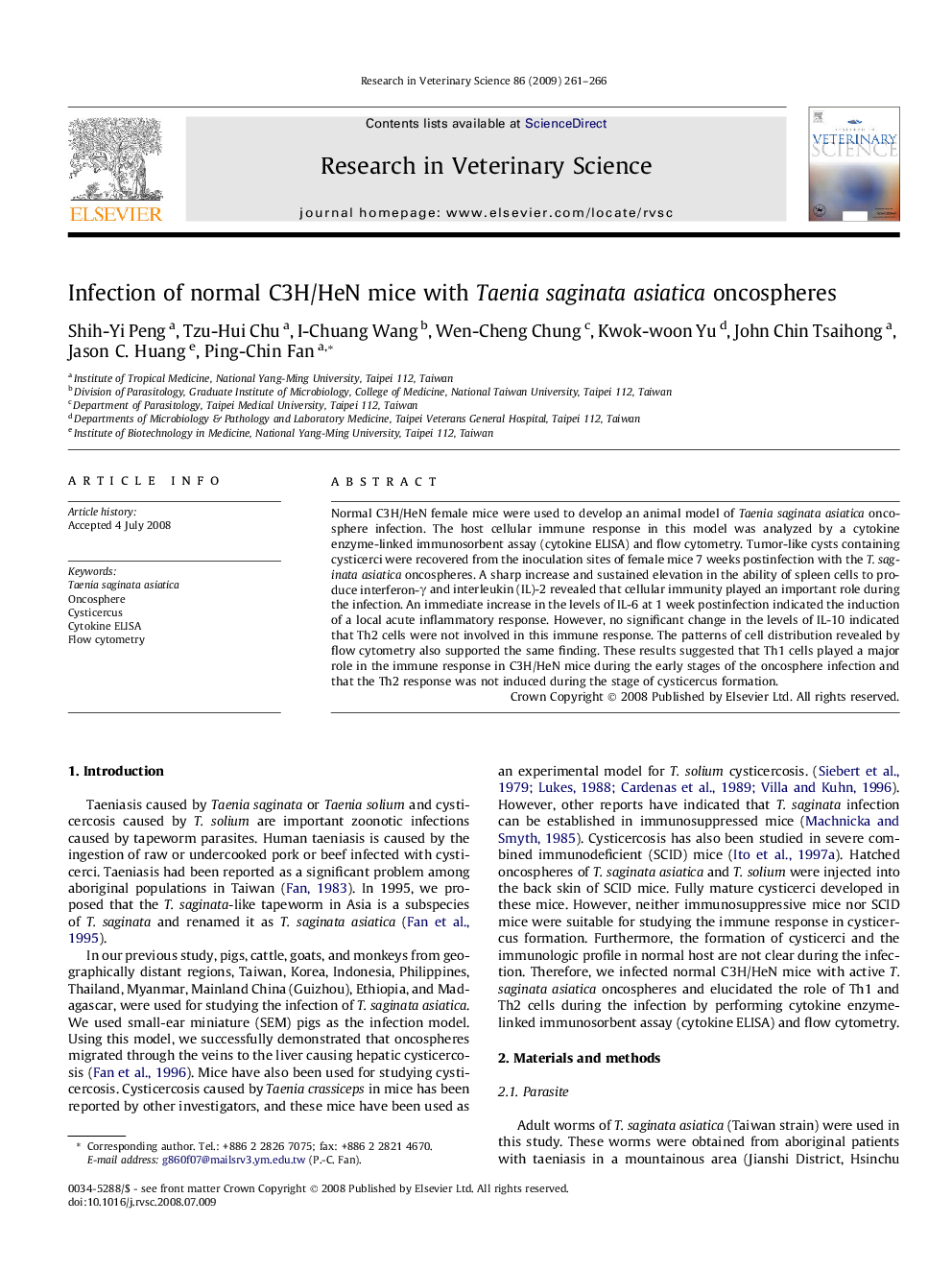| Article ID | Journal | Published Year | Pages | File Type |
|---|---|---|---|---|
| 2455951 | Research in Veterinary Science | 2009 | 6 Pages |
Abstract
Normal C3H/HeN female mice were used to develop an animal model of Taenia saginata asiatica oncosphere infection. The host cellular immune response in this model was analyzed by a cytokine enzyme-linked immunosorbent assay (cytokine ELISA) and flow cytometry. Tumor-like cysts containing cysticerci were recovered from the inoculation sites of female mice 7 weeks postinfection with the T. saginata asiatica oncospheres. A sharp increase and sustained elevation in the ability of spleen cells to produce interferon-γ and interleukin (IL)-2 revealed that cellular immunity played an important role during the infection. An immediate increase in the levels of IL-6 at 1 week postinfection indicated the induction of a local acute inflammatory response. However, no significant change in the levels of IL-10 indicated that Th2 cells were not involved in this immune response. The patterns of cell distribution revealed by flow cytometry also supported the same finding. These results suggested that Th1 cells played a major role in the immune response in C3H/HeN mice during the early stages of the oncosphere infection and that the Th2 response was not induced during the stage of cysticercus formation.
Keywords
Related Topics
Life Sciences
Agricultural and Biological Sciences
Animal Science and Zoology
Authors
Shih-Yi Peng, Tzu-Hui Chu, I-Chuang Wang, Wen-Cheng Chung, Kwok-woon Yu, John Chin Tsaihong, Jason C. Huang, Ping-Chin Fan,
